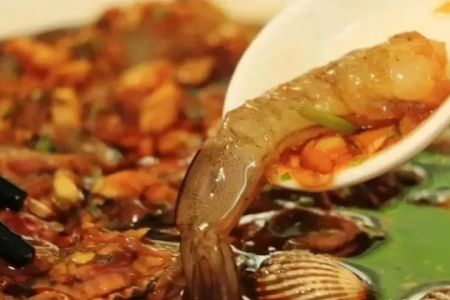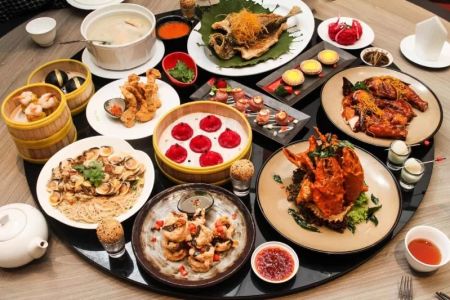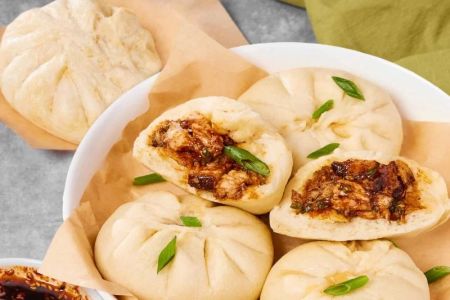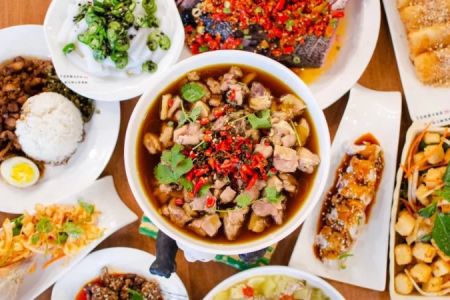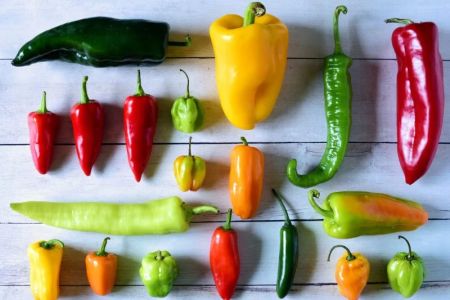- 1 - Origins of Dim Sum in Chinese History
- 2 - The Evolution of Small Bites into a Culinary Tradition
- 3 - Cultural Significance of Dim Sum in Daily Life
- 4 - Stories and Real-Life Examples of Dim Sum Culture
- 5 - Modern Dim Sum and Its Global Influence
- 6 - Where to Explore and Enjoy Authentic Dim Sum
1 - Origins of Dim Sum in Chinese History
The history of Chinese dim sum begins more than a thousand years ago, rooted in the tradition of tea houses along the Silk Road. Travelers and traders often stopped to rest, enjoying tea paired with light snacks. These small bites gradually evolved into what we now call dim sum, a reflection of hospitality and convenience. Originally seen in southern China, especially in Cantonese regions, dim sum became closely tied with the ritual of drinking tea, giving rise to the well-known practice called “yum cha.” These early beginnings set the foundation for a culinary tradition that would later spread across the world.
2 - The Evolution of Small Bites into a Culinary Tradition
From its humble origins, dim sum developed into an art form. Chefs began experimenting with ingredients and techniques, creating dumplings, buns, and rolls that captured both flavor and creativity. Each small bite was carefully designed to be enjoyed in just a few mouthfuls, making it a shared experience among family and friends. The tradition of small bites transformed into a sophisticated culinary practice, with hundreds of varieties served in bamboo steamers. What started as simple snacks became an elaborate dining culture, symbolizing abundance and togetherness in Chinese society.
3 - Cultural Significance of Dim Sum in Daily Life
Dim sum is more than food—it is culture. In southern China, weekend mornings often begin with family members gathering at local tea houses, chatting and bonding over plates of dumplings, rice rolls, and egg tarts. The phrase “let’s go for dim sum” has long meant more than a meal; it is an invitation to connect, celebrate, and slow down life’s pace. The history of Chinese dim sum reflects values of community and tradition, where sharing small bites at a round table creates a sense of belonging. This practice has continued for generations, making dim sum not just a culinary tradition but a social ritual as well.
4 - Stories and Real-Life Examples of Dim Sum Culture
In Hong Kong, certain dim sum dishes have become cultural icons. Har gow (shrimp dumplings) are so essential that chefs are judged on the thinness of their dumpling skins. Stories circulate online of chefs dedicating years to perfecting the fold of a siu mai, or steamed pork dumpling. Internationally, viral posts have shown how dim sum brings people together—such as large family reunions where dozens of bamboo baskets cover the table. One popular story tells of a 90-year-old grandmother teaching her grandchildren to roll dumplings by hand, showing that the tradition of small bites is as much about heritage as it is about taste.
5 - Modern Dim Sum and Its Global Influence
Today, dim sum has spread far beyond China, with restaurants in cities like London, New York, and Sydney offering modern interpretations of this classic cuisine. Some chefs experiment with fusion, filling dumplings with truffle or foie gras, while others remain dedicated to authentic Cantonese recipes passed down through generations. Social media platforms have amplified dim sum’s global appeal, with vibrant photos of steamed baskets and colorful buns attracting millions of views. Despite modern twists, the heart of dim sum remains the same: sharing small bites that bring people closer together. This balance of tradition and innovation keeps dim sum alive in a fast-changing culinary world.
6 - Where to Explore and Enjoy Authentic Dim Sum
For those eager to experience the Chinese dim sum tradition, the best way is to visit authentic restaurants that specialize in yum cha. Whether it’s a classic tea house in Guangzhou or a modern eatery in San Francisco’s Chinatown, the joy lies in sampling a wide variety of dishes. For curated recommendations and access to authentic culinary experiences, Chinese Food provides trusted guidance on where to find the best dim sum. From hidden gems to famous establishments, exploring these places allows food lovers to truly understand why dim sum has endured for centuries as a beloved tradition of small bites.


